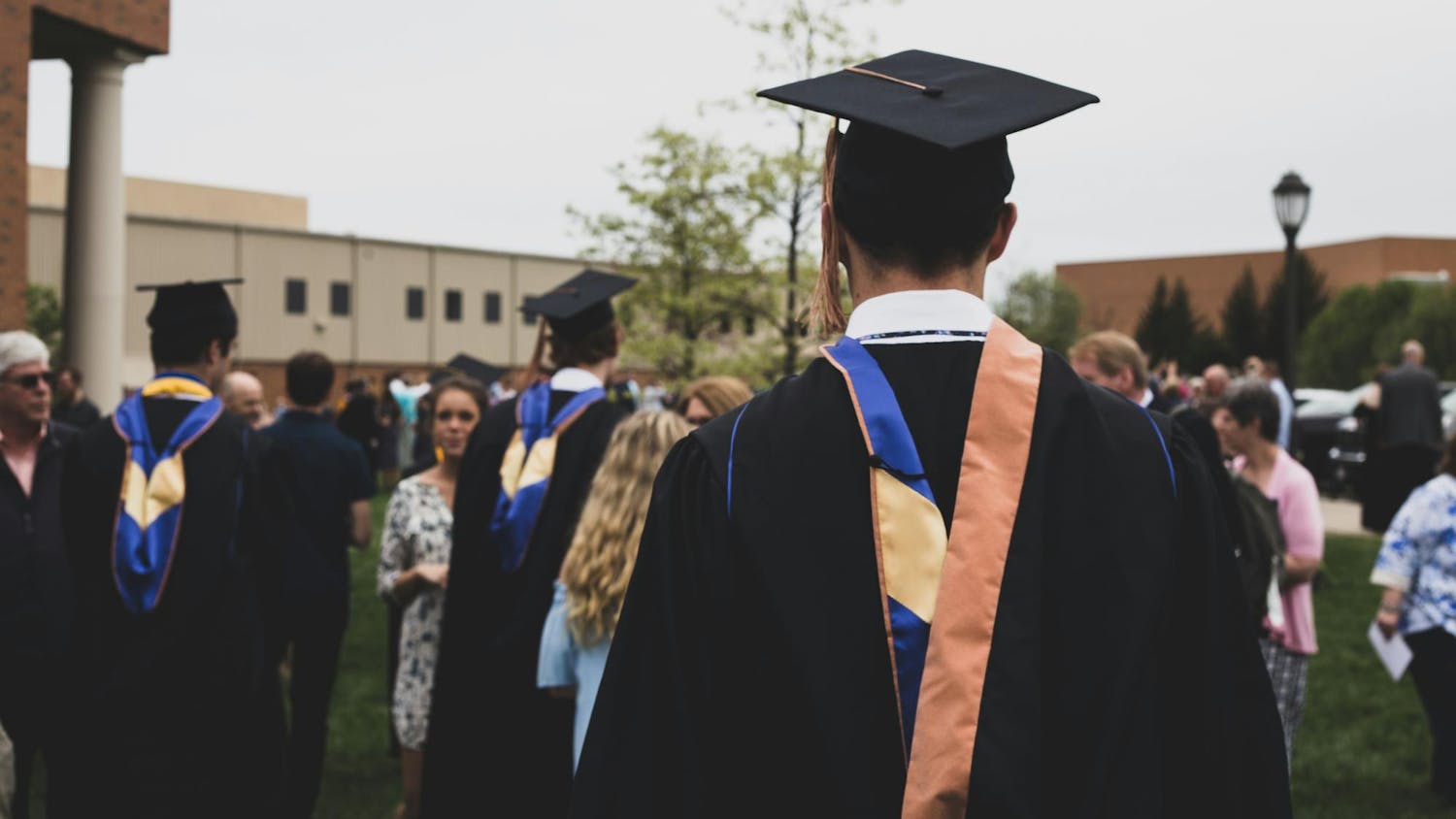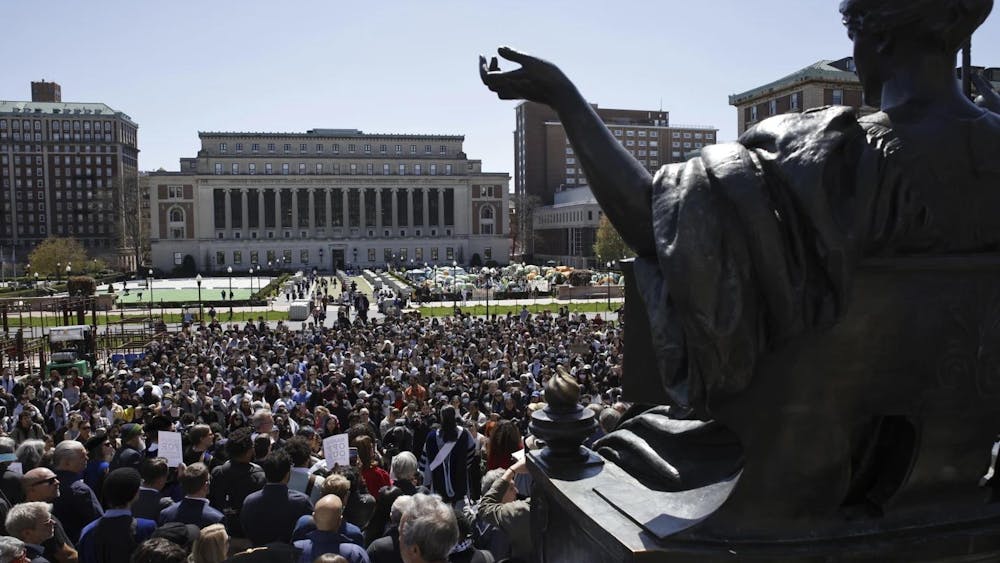This weekend, an original dramedy called “Lucky, Liar, Loser” will premiere at Saint Mary’s in Moreau’s Little Theatre beginning Thursday night at 7:30 p.m. The show, which centers on the theme of violence against women, was written and is directed by Casey Whitaker, a member of The Second City — a comedy theatre in Chicago — who is this year’s annual Saint Mary’s Margaret M. Hill visiting artist in residence.
After previously coming to teach some workshops at Saint Mary’s in 2015, Whitaker said she fell in love with the Saint Mary’s community.
“When I started writing this play, I reached out and we started figuring out a game plan,” she said. “The topic of the play was already established before Saint Mary’s was interested — I think it is the perfect place to display it.”
Whitaker defines a dramedy as a serious and dramatic play with elements of comedy. She added that originally, she did not mean for the comedy aspect to be such a major part of the show.
“Violence against women is not a laughing matter — it just crept in,” Whitaker said. “Then you think about what humor is actually used for — a lot of time it’s just a cover for what’s on the inside. That’s why we are able to find the truth so quickly, it’s because we’re broken.”
She said the comedy is not meant to disrespect or offset the seriousness of the topic.
“It’s more of comedic relief,” she said. “ ... A lot of times the characters don’t even know they’re as funny as they are. I don’t think people will think it’s disrespectful, it’s just honest and truthful.”
Whitaker had originally written the show as a short-film for the Goodman Theatre in Chicago when they requested entries for a screenplay to produce. However, the Theatre never produced any of the screenplays. Last December, Whitaker rewrote the screenplay into the current dramedy in only 48 hours.
“I had carried around every single scene in my head for over a year,” she said. “This project was in my head and now it’s time to do it.”
Her inspiration for writing this first came when a man broke into her bedroom two years ago. Whitaker said her boyfriend happened to be there that night to fight the intruder off, but the event stuck with her.
“It kind of opened my eyes to what I already knew and how this topic is handled,” she said. “It broke my heart.”
Whitaker said the nine main characters in the show are based on her personal experiences and other women who were willing to tell her their experiences.
“Anyone I met who was willing to tell me their story, I listened,” she said. “It’s a tribute to all the women I have met and the women who have survived and the women who aren’t ready to talk.”
Based on the experiences she had in mind, she separated the nine characters into three sections with three characters in each — the lucky, the liars and the losers — and left the characters unnamed.
“The different mini themes are me wanting to understand the different ways people experience violence,” Whitaker said. “I wanted the cast and the audience to know we are all these women.”
The lucky are those who say they are lucky because they have not been physically abused, but instead have possibly been emotionally abused without realizing it. The liars are those who tell themselves and others they are not victims, when they are, for various reasons.
Senior Olivia Jackson said she is playing one of the liars in the show.
“She’s a lawyer who is outnumbered by the men at her law firm,” Jackson said. “She has to joke around to be accepted as one of the guys, even if she doesn’t agree with what they’re saying.”
Whitaker said the loser section was the trickiest section to express. The losers are those who know violence is occurring but don’t do anything about it — don’t act in the moment or don’t share their survival story.
“Loser is a tricky word because it’s hard to make it not sound so negative,” she said. “The actual definition is a person or thing that is put at a disadvantage by a particular situation – so it’s a temporary thing.”
Gabrielle Weldy, a junior at Saint Mary’s and the stage manager for the show, said there are cast members from Saint Mary’s, Notre Dame, Holy Cross, the South Bend Community and Fischer Dance Company.
“The cast of the show has 27 people total — a large cast for the small department,” Weldy said. “That’s not including all of the contributors — costume, set, sound and lighting.”
The cast members of the production have been working two months to get the show to where it is now. Jackson said Whitakers work on this show has been especially admirable for that reason.
“Usually we only get to spend one weekend with the Margaret Hill visiting artist,” Jackson said. “It’s nice that we’ve gotten to spend two months learning from her.”
However, Whitaker said she has gotten a lot from the cast’s contributions to the production as well.
“I’m an improviser so I live by the philosophy ‘yes and’ so I am open to people’s suggestion and building as a group,” she said. “This cast had to do with a lot of the shaping and what the script had to be as the final product.”
Whitaker said Hannah Fischer, the owner of Fischer Dance Company in South Bend, has especially contributed to making the show what it is.
“I had written in movement sequences to the show,” she said. “I have some dance training, but I would have never been able to do what Hannah did with the dance.
“There are pre-filmed elements, a shadow puppet tree, a live quartet playing all the music and this modern dance element. Hannah Fischer is choreographing the elements.”
Fischer graduated from Saint Mary’s in 2011 with a major in women’s studies and dance. Only six of the cast members are from her dance company; the rest are from the community.
“This show is focusing on modern dance, but I’m working with a cast that hasn’t been trained in modern dance,” Fischer said. “The whole show is a combination of modern dance, theater and everyday movements in block features that look like dance”
Jackson was one of the cast members who needed to adapt to the dance element.
“I’m not a dancer — I knew nothing before,” she said.“We’re also using a lot of projection and shadow puppetry which as an actor I’m not always involved with, but it’s really fascinating and I haven’t seen it before. It’s been really cool to break down genre.”
On the other hand, those who have been trained in dance have experienced a new element of acting. Saint Mary’s senior Margaret Davis and first year Elyse Paul said this is their first production with an acting role.
“I think it’s really interesting how Casey is incorporating dance,” Davis said. “I think it brings it together — it keeps the audience thinking.”
Fischer said the dance element is essential to delivering the message to the audience.
“It’s a heavy topic, so the movement itself had to be simple to deal with that very complex conversation,” she said. “The movement itself is more about the intention and where you’re looking at and who you’re responding to rather than a line or the shape of the movement.”
Those who come to the show who have experienced violence should not have to worry about triggers, Whitaker said.
“I can’t say for sure, but I think people are going to be pleasantly surprised with how accessible the material is,” she said. “If one is a little too close to home, there’s eight more you might feel a little more connected with.”
Fischer said the style of this show is unique, especially to the South Bend community.
“This show is groundbreaking for South Bend,” she said. “Work like this isn’t done in the area.”
Whitaker says the end may not be happy, but it is powerful.
“All I can do is start a conversation and let people know they are not alone,” she said. “The message is empowerment, I don’t think anyone will leave and feel worse than they did when they walked in.”













